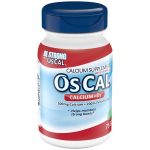Mausera: Benefits, Uses, Dosage, Side Effects, Interactions, Price

Mausera is a brand of serratiopeptidase, an enzyme with a growing reputation for its potential health benefits. Derived from the silkworm, this enzyme is recognized for its anti-inflammatory and pain-relieving properties
Serratiopeptidase was first discovered in the digestive system of the silkworm. It is primarily used for breaking down the proteins present in the silkworm’s cocoon. This enzyme has found applications beyond the world of silkworms and has become a subject of interest in the field of medicine due to its potential health benefits. Each tablet of Mausera contains 10mg Serratiopeptidase.
Uses of Mausera (Serratiopeptidase)
1. Anti-Inflammatory Properties: One of the most well-known uses of Mausera is its anti-inflammatory effect. It has the ability to reduce inflammation by breaking down proteins that contribute to the swelling and pain associated with various conditions. This property has made it a popular choice for individuals seeking natural alternatives to manage inflammation, especially for those with chronic conditions like arthritis.
2. Pain Management: Mausera has gained recognition for its pain-relieving properties. By reducing inflammation, it can help alleviate pain associated with conditions such as osteoarthritis, rheumatoid arthritis, and sports injuries. Some individuals turn to Mausera as an adjunct to conventional pain management approaches.
3. Respiratory Health: Serratiopeptidase is believed to have potential benefits for respiratory health. It is sometimes used to alleviate symptoms associated with conditions like chronic obstructive pulmonary disease (COPD) and sinusitis. By breaking down mucus and reducing inflammation in the airways, it may help improve breathing and reduce congestion.
4. Postoperative Recovery: Serratiopeptidase is occasionally prescribed by healthcare professionals to aid in postoperative recovery. It is thought to reduce post-surgical swelling and promote faster healing. However, its use in this context should be under the guidance of a medical professional.
5. Cardiovascular Health: Some studies have suggested that Mausera may have a role in promoting cardiovascular health. It is believed to assist in the breakdown of arterial plaque and prevent blood clots. These potential benefits could contribute to better heart health, but further research is needed to confirm these effects.
6. Anti-Edema Properties: Mausera is sometimes used to reduce edema, which is the accumulation of excess fluid in body tissues. This can be particularly useful for individuals with conditions that cause edema, such as lymphedema or venous insufficiency.
7. Dental and Oral Health: In some cases, serratiopeptidase has been used to support oral health by reducing inflammation and pain associated with dental procedures, gum disease, or oral surgery.
How to Use Mausera
While Mausera shows promise in various applications, it’s essential to consider several factors before using it. The recommended adult dosage of Mausera, typically at 10 mg three times a day, serves as a guideline for its effective use. It is important to note that this dosage is usually administered after meals, which can help enhance its absorption and reduce the risk of gastrointestinal discomfort. The maximum daily dose of Mausera is set at 60 mg, ensuring that individuals do not exceed this limit to minimize potential side effects or adverse reactions.
When Mausera is used as an anti-inflammatory agent, the standard treatment duration usually spans up to one week. During this time, it can be particularly effective in reducing inflammation and alleviating associated symptoms, such as pain and swelling.
For individuals seeking mucolytic benefits from Mausera, the typical treatment duration extends up to four weeks. As a mucolytic agent, it aids in breaking down mucus and reducing congestion, making it especially valuable for conditions like chronic obstructive pulmonary disease (COPD) or sinusitis.
Adhering to these recommended dosages and treatment durations, individuals can maximize the potential benefits of Mausera while minimizing the risk of adverse effects, ensuring safe and effective use. Always consult with a healthcare professional for personalized guidance and to address any concerns or specific medical conditions.
Pregnancy and Breastfeeding
Pregnant and breastfeeding individuals should exercise utmost caution when considering the use of Mausera. It is highly advisable that they seek guidance from a healthcare provider before initiating any regimen involving this enzyme. This precaution is essential to ensure the safety of both the expectant or nursing mother and her child, as potential effects on pregnancy and lactation remain areas that require careful evaluation by a medical professional.
Potential Side Effects
Like any supplement or medication, Mausera can have side effects.
• Common side effects may include:
• Gastrointestinal issues, such as abdominal discomfort, bloating, or mild digestive disturbances.
• Rarer side effects may involve:
• Allergic reactions, which can manifest as itching, hives, swelling of the face or throat, and difficulty breathing.
• Skin rashes, which may present as redness, itching, or skin irritation.
• It is essential to be aware of these potential side effects and discontinue use if they occur.
• Promptly seek medical attention if any adverse reactions occur to prevent further complications.
Your health and well-being should always be a top priority when considering the use of any substance.
Interactions
It’s crucial to be aware that Mausera, like many supplements and medications, may interact with certain drugs, potentially leading to adverse effects or reduced effectiveness. Specifically, it can interact with medications like blood thinners, which are often prescribed to prevent clotting and manage conditions such as cardiovascular diseases.
Blood thinners, also known as anticoagulants, work by altering the blood’s ability to form clots. When used in conjunction with Mausera, there is the potential for interactions that may affect the delicate balance of blood clotting mechanisms in the body. This interaction could lead to increased bleeding tendencies, potentially causing excessive bleeding or bruising.
For this reason, if you are currently taking any medications, particularly blood thinners, it is strongly advisable to consult with a healthcare provider before incorporating Mausera into your regimen. Your healthcare professional can assess your specific medical history, evaluate the potential interactions, and recommend the most suitable course of action. They may adjust your medication dosages or suggest alternative treatments to ensure your safety and optimize the desired health outcomes. In cases like this, medical guidance is of paramount importance to prevent any unintended and potentially harmful consequences resulting from drug interactions.
Price
The price of for a pack of Mausera containing 10 tablets is ₹36.00 or $0.43.
Manufacturer
Mausera is manufactured and distributed by Mamta Pharmaceuticals





